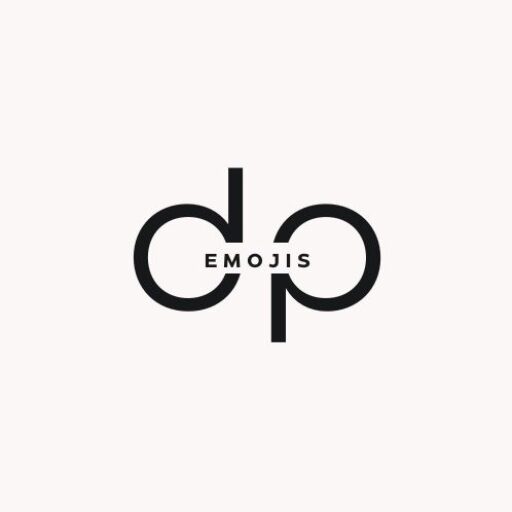The rise of emojis has fundamentally transformed how we communicate online, revolutionizing digital conversations and creating a universal visual language that transcends traditional text-based messaging. These small pictographic symbols have become essential elements of modern digital communication, reshaping everything from casual social media interactions to professional email correspondence. The evolution of emoji usage represents one of the most significant changes in online communication patterns since the advent of instant messaging, influencing how billions of people express emotions, convey meaning, and connect across cultural and linguistic barriers in our increasingly connected digital world.
The Historical Evolution of Digital Expression
The journey of how emojis changed online communication begins with understanding their origins and rapid adoption across digital platforms. Before emojis became mainstream, internet users relied heavily on text-based emoticons like 🙂 and 🙁 to add emotional context to their messages. This primitive form of digital expression laid the groundwork for what would eventually become a sophisticated visual communication system.
The transformation accelerated when Japanese mobile carriers introduced the first emoji sets in the late 1990s, creating colorful pictographs that could convey complex emotions and concepts instantly. This innovation marked the beginning of a new era in digital communication, where visual elements began supplementing and sometimes replacing traditional text-based messaging patterns.
Breaking Down Language Barriers Through Visual Communication
One of the most profound ways emojis transformed online communication lies in their ability to transcend linguistic boundaries and create universal understanding. Unlike written language, which requires shared vocabulary and grammar knowledge, emojis communicate through recognizable visual symbols that often carry similar meanings across different cultures and languages.
This visual communication revolution has enabled people from diverse linguistic backgrounds to engage in meaningful exchanges without extensive language skills. International social media platforms have particularly benefited from this phenomenon, as users can now participate in global conversations using emoji combinations that convey emotions, reactions, and basic concepts universally understood across continents.
The Psychology Behind Emoji Usage in Digital Conversations
The psychological impact of emoji integration in online communication reveals fascinating insights into human behavior and emotional expression in digital spaces. Research demonstrates that emojis activate similar brain regions as face-to-face emotional recognition, creating neurological bridges between digital and physical communication experiences.
These visual cues help compensate for the absence of nonverbal communication elements like facial expressions, tone of voice, and body language that are naturally present in face-to-face interactions. By incorporating emojis into their messages, users can reduce misunderstandings, soften potentially harsh text, and add emotional depth to otherwise flat digital communications.
Social Media Platforms and Emoji Integration
Major social media platforms have played crucial roles in popularizing emoji usage and standardizing their implementation across different digital environments. Facebook’s introduction of emoji reactions beyond the simple “like” button exemplified how platforms began recognizing the need for more nuanced emotional expression options.
Twitter’s character limitations made emojis particularly valuable, allowing users to convey complex emotions and ideas within strict space constraints. Instagram’s visual-first approach naturally embraced emoji culture, with users incorporating these symbols into captions, comments, and even usernames to enhance their digital presence and engagement rates.
Professional Communication and Workplace Emoji Adoption
The infiltration of emojis into professional communication represents one of the most surprising developments in workplace digital culture. Initially considered unprofessional, emojis have gradually gained acceptance in business environments as companies recognize their value in creating warmer, more approachable communication styles.
Studies indicate that appropriate emoji usage in professional settings can increase perceived friendliness and approachability without compromising competence when used strategically. However, workplace emoji adoption varies significantly across industries, generations, and cultural contexts, creating new etiquette considerations for modern professionals navigating digital communication norms.
Marketing and Brand Communication Through Emoji Strategies
Businesses quickly recognized the marketing potential of emoji communication, incorporating these visual elements into brand messaging, advertising campaigns, and customer engagement strategies. The ability of emojis to convey brand personality, evoke emotional responses, and increase engagement rates has made them valuable tools in digital marketing arsenals.
Successful emoji marketing requires understanding target audience preferences, cultural sensitivities, and platform-specific usage patterns. Brands that effectively integrate emojis into their communication strategies often see improved click-through rates, higher social media engagement, and stronger emotional connections with their audiences across various demographic segments.
Cross-Cultural Communication Challenges and Solutions
While emojis facilitate global communication, they also present unique challenges related to cultural interpretation and meaning variations. The same emoji can carry different connotations across cultures, potentially leading to misunderstandings in international digital communications.
For instance, certain hand gesture emojis may be considered offensive in some cultures while remaining neutral in others. Color variations in human emojis have introduced important conversations about representation and inclusivity in digital communication, leading to expanded emoji sets that better reflect global diversity and cultural nuances.
The Rise of Emoji Literacy and Digital Communication Skills
The widespread adoption of emoji communication has created a new form of digital literacy that requires understanding visual symbolism, cultural context, and appropriate usage patterns. Younger generations, who grew up with emojis, often demonstrate sophisticated emoji literacy skills that enable them to communicate complex ideas through strategic symbol combinations.
Educational institutions and communication researchers have begun studying emoji literacy as a legitimate component of modern communication competency. This evolution reflects how digital communication skills have become essential for effective participation in contemporary social, professional, and educational environments.
Impact on Language Evolution and Linguistic Patterns
Emojis have influenced not only how we communicate but also the evolution of language itself, creating hybrid communication styles that blend visual and textual elements. Linguistic researchers document changes in sentence structure, punctuation usage, and writing patterns that directly correlate with emoji adoption in digital communications.
The phenomenon of emoji substitution, where symbols replace words or entire phrases, represents a significant shift toward more visual language patterns. This evolution raises fascinating questions about the future of written communication and the potential for visual symbols to become increasingly integrated into formal language structures.
Accessibility and Inclusive Communication Design
The development of more inclusive emoji sets has highlighted important accessibility considerations in digital communication design. Screen readers and assistive technologies must interpret emoji descriptions, making thoughtful emoji usage crucial for maintaining accessibility in digital communications.
Recent emoji updates have included better representation for people with disabilities, diverse skin tones, and various family structures, reflecting broader societal conversations about inclusion and representation in digital spaces. These improvements demonstrate how emoji development can contribute to more accessible and inclusive online communication environments.
Generational Differences in Emoji Communication Patterns
Different generations exhibit distinct emoji usage patterns, preferences, and interpretations, creating intergenerational communication dynamics that reflect broader technological adoption patterns. Millennials and Generation Z users typically demonstrate higher emoji literacy and more frequent usage compared to older generations.
These generational differences influence workplace communication styles, family digital interactions, and cross-generational relationship building in online spaces. Understanding these patterns helps individuals navigate intergenerational digital communication more effectively while respecting different comfort levels and preferences regarding emoji usage.
The Future of Visual Communication Technology
Emerging technologies continue to expand the possibilities for visual communication beyond traditional emojis, including animated GIFs, custom stickers, and augmented reality elements. These innovations suggest that the transformation of online communication through visual elements will continue evolving as technology advances.
Virtual and augmented reality platforms are beginning to incorporate three-dimensional emoji-like elements that can convey even more sophisticated emotional and contextual information. The integration of artificial intelligence in communication platforms may also enable more personalized and context-aware visual communication suggestions for users.
Security and Privacy Considerations in Emoji Communication
The increasing sophistication of emoji communication has introduced new considerations regarding privacy and security in digital communications. While emojis themselves don’t typically pose security risks, their usage patterns can reveal information about users’ emotional states, cultural backgrounds, and communication preferences.
Data collection practices around emoji usage by social media platforms and messaging services raise important privacy questions about how this behavioral information is stored, analyzed, and potentially monetized. Users should remain aware of these considerations while enjoying the benefits of enhanced visual communication capabilities.
Measuring the Impact: Statistics and Communication Research
Comprehensive research demonstrates the profound impact emojis have had on digital communication patterns, with studies showing significant increases in message engagement, emotional expression, and cross-cultural communication success rates when emojis are appropriately incorporated into digital messages.
Statistical analysis reveals that messages containing emojis receive higher response rates, longer engagement times, and more positive emotional reactions compared to text-only communications across various digital platforms. These findings validate the importance of visual elements in modern communication effectiveness and user satisfaction.
Conclusion: The Lasting Legacy of Emoji Communication
The transformation of online communication through emoji adoption represents a fundamental shift in how humans express themselves in digital environments. From breaking down language barriers to enhancing emotional expression, emojis have created new possibilities for connection, understanding, and engagement across diverse global communities.
As digital communication continues evolving, the principles established by emoji adoption—visual expression, cultural sensitivity, and inclusive design—will likely influence future communication innovations. The success of emojis in transforming online interactions demonstrates the human need for rich, expressive communication tools that can convey the full spectrum of human emotion and experience, even in digital spaces that were once limited to plain text exchanges.




